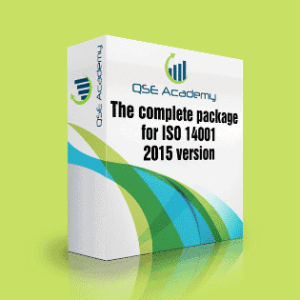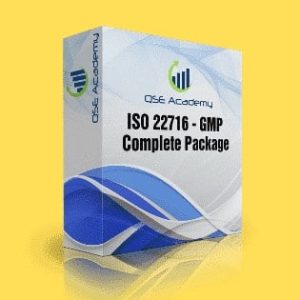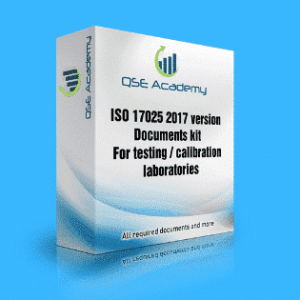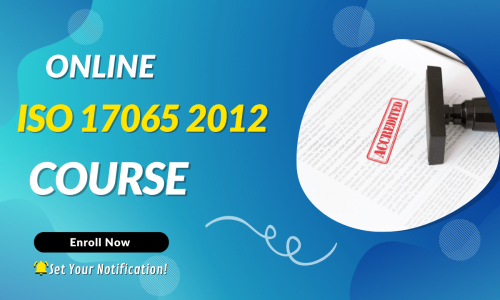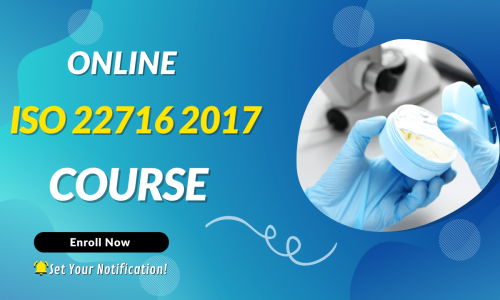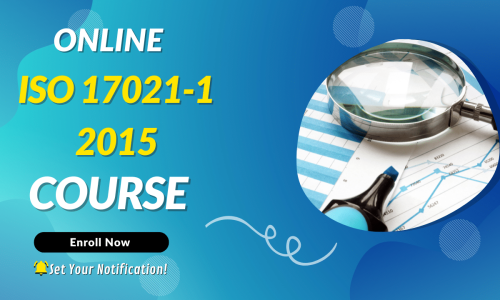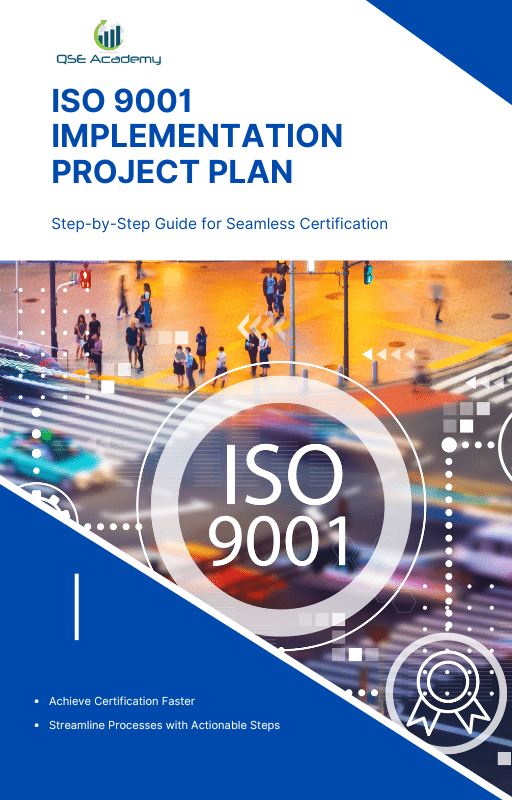What is the difference between ISO 9001 and ISO 13485?
What is the difference between ISO 9001 and ISO 13485?
If you’ve ever come across ISO standards, you’ve probably heard about ISO 9001 and ISO 13485. But you might be wondering, what is the difference between ISO 9001 and ISO 13485? At first glance, they might seem similar—they’re both internationally recognized standards for quality management systems. However, they serve very different purposes and industries.
In simple terms, ISO 9001 is a flexible standard that can be applied to almost any industry, focusing on customer satisfaction and continuous improvement. On the other hand, ISO 13485 is specifically designed for the medical device industry, with a strong emphasis on meeting regulatory requirements and ensuring product safety.
Understanding the difference between ISO 9001 and ISO 13485 is important, whether you’re trying to decide which standard your organization needs or you’re just curious about how these frameworks help businesses deliver quality. In this article, we’ll break it all down for you in an approachable way—no complicated jargon, just clear and simple explanations. Let’s dive in!
An Overview of ISO 9001 and ISO 13485
Before we dive deeper into the difference between ISO 9001 and ISO 13485, it’s helpful to understand what these standards are all about. Both are frameworks for quality management systems, but they serve different purposes and industries. Let’s break it down.
What is ISO 9001?
ISO 9001 is the global standard for quality management systems (QMS). It’s designed to help businesses of all sizes and industries improve their processes, ensure consistent quality, and enhance customer satisfaction. Think of ISO 9001 as a blueprint for creating an efficient, customer-focused organization.
The beauty of ISO 9001 is its versatility. It’s not tied to any specific industry, which is why you’ll find it being used everywhere—from a small coffee shop ensuring consistent latte art to a massive tech company guaranteeing reliable software updates. The focus here is on meeting customer needs, improving processes, and delivering consistent results.
What is ISO 13485?
Now, let’s talk about ISO 13485. Unlike ISO 9001, ISO 13485 is tailored specifically for the medical device industry. Its primary focus is on ensuring the safety and effectiveness of medical devices while meeting strict regulatory requirements. This means it goes beyond general quality management and delves into areas like risk management, product traceability, and compliance with healthcare laws.
For example, if you’re a company manufacturing pacemakers or surgical instruments, ISO 13485 is the standard you’d follow to ensure your products meet both customer and regulatory expectations. It’s a way to demonstrate that safety and quality are built into every step of your production process.
While there’s a clear difference between ISO 9001 and ISO 13485, they do share some common ground. Both standards focus on creating processes that lead to consistent quality. They’re built around principles like leadership, customer focus, and process control. However, ISO 13485 takes these principles a step further by prioritizing risk management and regulatory compliance—essential in the healthcare industry.
Now that we’ve covered the basics, let’s move on to explore the key similarities and differences between these two standards. Understanding the difference between ISO 9001 and ISO 13485 will help you see how they’re designed to address very different needs. Ready? Let’s dive deeper!
Key Similarities Between ISO 9001 and ISO 13485
Now that we’ve covered the basics, let’s look at some of the ways ISO 9001 and ISO 13485 overlap. Understanding these similarities is a great starting point before we dive into the finer difference between ISO 9001 and ISO 13485. While they serve different purposes and industries, they share a common goal: to help organizations deliver quality.
Both Are Quality Management Standards
At their core, both ISO 9001 and ISO 13485 are about creating effective quality management systems (QMS). They provide frameworks that organizations can follow to ensure their processes run smoothly and consistently. Whether it’s about producing a flawless cup of coffee (ISO 9001) or manufacturing a safe and effective medical device (ISO 13485), both standards aim to help organizations achieve consistent quality.
For example, both standards require clear documentation of processes. This isn’t just for show—it’s about ensuring that everyone in the organization is on the same page. When processes are clearly defined and followed, it reduces errors and improves outcomes, no matter the industry.
Another similarity between the two standards lies in the quality management principles they are built on. Some of these shared principles include:
- Customer Focus: Both standards emphasize the importance of meeting customer needs. For ISO 9001, this might mean delivering consistent service to keep customers coming back. For ISO 13485, it could mean ensuring that a medical device performs reliably to protect patient safety.
- Leadership: Strong leadership is essential in both ISO 9001 and ISO 13485. Leaders set the tone for quality by ensuring their teams are aligned with the organization’s goals and committed to delivering value.
- Process Approach: Both standards encourage a process-based approach to managing operations. By breaking work into clear, manageable steps, organizations can improve efficiency and minimize errors.
These shared principles form the foundation of both standards, even though their applications may differ. Understanding these commonalities is key to grasping the difference between ISO 9001 and ISO 13485, which becomes clearer as we look at how these principles are applied.
Both Standards Require Continuous Improvement
One of the most valuable aspects of both ISO 9001 and ISO 13485 is the focus on improvement. Even though ISO 9001 emphasizes continual improvement more broadly, ISO 13485 still requires businesses to consistently assess and refine their processes—especially when it comes to product safety and risk management.
For instance, a company using ISO 9001 might focus on improving customer feedback processes to better understand client needs. Meanwhile, a company following ISO 13485 might prioritize improving how they identify and mitigate risks during the development of a medical device.
While there are shared goals and principles, the difference between ISO 9001 and ISO 13485 lies in how these elements are applied. In the next section, we’ll dive into the specifics of what sets these two standards apart and how they’re uniquely tailored to different industries and needs. Let’s get into it!
The Core Difference Between ISO 9001 and ISO 13485
Now that we’ve explored the similarities, let’s dive into what really sets these two standards apart. The difference between ISO 9001 and ISO 13485 lies in their purpose, focus, and the industries they serve. While they both revolve around quality management, they approach it from very different angles.
Industries Served
One of the most obvious differences is who these standards are meant for. ISO 9001 is a general-purpose quality management standard that applies to virtually any industry. Whether you’re running a manufacturing plant, a tech company, or even a coffee shop, ISO 9001 can help you streamline operations and improve customer satisfaction.
In contrast, ISO 13485 is specifically designed for the medical devices industry. This means it’s tailored to meet the unique needs and challenges of companies that design, produce, or distribute medical devices. If you’re manufacturing anything from surgical tools to diagnostic machines, ISO 13485 ensures your products meet strict regulatory requirements and prioritize patient safety.
Regulatory Focus
Here’s where the difference between ISO 9001 and ISO 13485 really stands out: their approach to regulations. While ISO 9001 focuses on improving overall business processes and customer satisfaction, ISO 13485 places a heavy emphasis on regulatory compliance.
For example, ISO 13485 requires businesses to meet strict healthcare regulations like those set by the FDA in the United States or the European Union Medical Device Regulation (EU MDR). These rules ensure that medical devices are safe and effective before they reach the market. ISO 9001, on the other hand, doesn’t deal with industry-specific regulations—it’s more about creating a system that works efficiently and improves over time.
Continuous Improvement vs. Risk Management
Another key difference between ISO 9001 and ISO 13485 is their focus when it comes to improving processes. ISO 9001 puts a strong emphasis on continuous improvement, encouraging organizations to constantly refine their operations to become more efficient and effective.
In contrast, ISO 13485 prioritizes risk management over continual improvement. In the medical devices industry, safety is the top priority, so ISO 13485 focuses on identifying and minimizing risks throughout the product lifecycle. For instance, a company making pacemakers would use ISO 13485 to identify potential risks during production and implement controls to prevent issues before the product reaches patients.
Documentation and Traceability
Another major difference lies in the level of documentation required. Both standards require businesses to document their processes, but ISO 13485 takes this to a whole new level. Medical devices must have detailed records that allow for full traceability—meaning you can track a product from its raw materials all the way to its final delivery. This level of documentation is critical in case there’s ever a need for a recall or regulatory audit.
ISO 9001, while still requiring clear documentation, doesn’t demand this level of traceability. Its focus is more on creating efficient workflows and maintaining consistency across the board.
Understanding the difference between ISO 9001 and ISO 13485 is key to choosing the right standard for your organization. While ISO 9001 is ideal for improving overall quality and customer satisfaction in any industry, ISO 13485 is non-negotiable for companies in the medical device field, where safety and regulatory compliance are paramount.
In the next section, we’ll explore practical scenarios where each standard is the best fit. Whether you’re a small business or a global enterprise, knowing which standard to follow can make all the difference. Let’s keep going!
Practical Applications of ISO 9001 and ISO 13485
Now that we’ve explored the core difference between ISO 9001 and ISO 13485, let’s talk about when and where each standard is applied. Whether you’re running a small business or a global enterprise, understanding which standard suits your specific needs can help you make smarter decisions. Let’s dive into some real-world scenarios to bring these standards to life.
When to Choose ISO 9001
If you’re in an industry where improving efficiency, customer satisfaction, and overall quality are your main goals, ISO 9001 is your go-to standard. It’s designed to work across all industries and can be customized to fit businesses of any size. From service providers to manufacturers, ISO 9001 helps organizations create a strong foundation for long-term success.
For example:
- A tech company: Imagine a software company that wants to improve customer satisfaction by delivering reliable updates and minimizing bugs. By following ISO 9001, they can streamline their development process, prioritize user feedback, and ensure consistent quality in every release.
- A small retail shop: A local boutique might use ISO 9001 to standardize how they manage inventory, handle customer inquiries, and train their staff. This ensures a smooth shopping experience for every customer.
The focus here is on building systems that consistently meet customer expectations, no matter what you’re delivering. That’s where the flexibility of ISO 9001 shines.
When to Choose ISO 13485
On the other hand, if your business operates in the medical device industry, ISO 13485 is essential. It’s designed specifically for companies that manufacture, design, or distribute medical devices, where safety, compliance, and risk management are non-negotiable. ISO 13485 ensures that every step of the process, from development to distribution, aligns with strict regulatory requirements.
For example:
- A medical device manufacturer: Picture a company that produces pacemakers. With ISO 13485, they can ensure that each device meets strict safety standards, from the sourcing of materials to the final product that reaches hospitals and patients.
- A supplier for medical devices: Even companies that don’t make devices but provide critical components, like surgical screws or diagnostic materials, benefit from ISO 13485. It ensures their products meet the same high standards expected in the medical field.
The key here is meeting regulatory demands while ensuring the safety and effectiveness of products that directly impact lives. That’s a big part of the difference between ISO 9001 and ISO 13485—ISO 13485 goes deeper into risk management and regulatory compliance.
How to Decide Between ISO 9001 and ISO 13485
Still unsure which standard applies to you? Here’s a simple way to think about it:
- If your business operates in any industry and focuses on general quality management and customer satisfaction, ISO 9001 is your best fit.
- If your organization is involved in the medical device industry, whether directly or indirectly, ISO 13485 is the way to go. It’s designed to meet the strict demands of healthcare and patient safety.
By understanding the difference between ISO 9001 and ISO 13485, you can align your organization with the standard that best supports your goals. Whether you’re aiming for greater efficiency or working to meet strict healthcare regulations, choosing the right standard ensures you’re set up for success.
In the next section, we’ll dive into the certification process for both standards and explore what it takes to achieve compliance. Let’s keep the momentum going!
Certification Processes for ISO 9001 and ISO 13485
If you’re considering implementing one of these standards, you’re probably wondering what the certification process looks like. While there are similarities, the difference between ISO 9001 and ISO 13485 becomes more apparent during certification. Let’s break it down so you know what to expect.
The Basics of Certification
For both ISO 9001 and ISO 13485, the certification process involves three main steps:
- Gap Analysis: This is where your organization reviews its current processes to see how they align with the standard’s requirements.
- Implementation: You make the necessary changes to your processes, policies, and documentation to meet the requirements of the chosen standard.
- Audit: An external certification body reviews your organization’s systems to ensure compliance. If everything checks out, you’re awarded certification.
So far, the processes look similar, but let’s dive into the specific differences.
ISO 9001 Certification: A Focus on Flexibility
Since ISO 9001 applies to a broad range of industries, the certification process is relatively flexible. Businesses can tailor their quality management systems (QMS) to fit their unique needs, as long as they meet the core principles of the standard.
For example, a small graphic design firm might focus on standardizing client communication and project delivery, while a large manufacturer might prioritize consistent product output. Both approaches work within ISO 9001’s framework, making the certification process adaptable to nearly any industry.
The key to achieving ISO 9001 certification is demonstrating that your organization consistently meets customer expectations and is committed to continual improvement. The process is straightforward and works well for businesses aiming to enhance efficiency and customer satisfaction.
ISO 13485 Certification: A Regulatory Focus
Here’s where the difference between ISO 9001 and ISO 13485 becomes clear. Certification for ISO 13485 involves more stringent requirements because it’s specifically designed for the medical devices industry. Not only do you need to implement a QMS, but you also need to prove compliance with industry regulations, such as FDA or EU MDR standards.
For instance:
- Risk Management: ISO 13485 requires detailed risk assessments throughout the product lifecycle. This involves identifying potential hazards, assessing their impact, and implementing measures to minimize risks.
- Traceability: You’ll need to provide extensive documentation showing the traceability of materials and products. This ensures that if an issue arises, the source of the problem can be quickly identified and resolved.
- Validation and Testing: If your organization produces medical devices, you’ll also need to validate and test your products to ensure they meet safety and performance standards.
Certification for ISO 13485 is a more detailed process, reflecting the high stakes of the medical field. It’s not just about efficiency or customer satisfaction—it’s about ensuring that every product is safe, effective, and meets strict regulatory requirements.
Which Certification Is Right for You?
Choosing between ISO 9001 and ISO 13485 depends entirely on your industry and goals. If you’re in a general industry and want to boost customer satisfaction or streamline your processes, ISO 9001 certification is a perfect fit. But if you’re in the medical devices field, ISO 13485 is essential to demonstrate compliance, manage risk, and ensure patient safety.
Both certifications show a commitment to quality, but the difference between ISO 9001 and ISO 13485 lies in their focus—ISO 9001 is broader and more flexible, while ISO 13485 is specialized and deeply rooted in regulatory compliance.
Understanding the certification process for these standards helps you prepare for what’s involved and ensures your organization is ready to succeed. Now that we’ve covered how certification works, let’s take a step back and summarize why understanding the difference between ISO 9001 and ISO 13485 is so important. Let’s wrap it all up!
Why Understanding the Difference Between ISO 9001 and ISO 13485 Matters
Now that we’ve explored both standards in detail, let’s talk about why it’s so important to understand the difference between ISO 9001 and ISO 13485. Whether you’re a business owner, a team member, or even a curious customer, knowing how these standards differ can help you make smarter decisions and recognize their value.
Choosing the Right Standard for Your Industry
The most obvious reason to understand the difference between ISO 9001 and ISO 13485 is so you can choose the right standard for your organization. If your business isn’t tied to a specific industry, ISO 9001 is the perfect fit. It’s flexible, adaptable, and can be applied to nearly any type of operation—whether you’re selling products, offering services, or running a nonprofit.
However, if you’re in the medical device industry, there’s no question that ISO 13485 is the right choice. Why? Because it’s specifically designed to meet the rigorous safety and regulatory demands of healthcare. Choosing the wrong standard could mean missing critical requirements or falling short of industry expectations. That’s why understanding this difference is essential.
Ensuring Regulatory Compliance
Another key reason to understand the difference between ISO 9001 and ISO 13485 is regulatory compliance. Medical devices, by their very nature, are subject to strict regulations to protect patient safety. ISO 13485 not only helps organizations meet these requirements but also builds a framework for managing risk and maintaining compliance over time.
On the flip side, ISO 9001 is not focused on specific regulations—it’s more about creating an efficient, customer-focused quality management system. If regulatory compliance isn’t a major factor in your industry, ISO 9001 will likely give you all the tools you need without overcomplicating things.
Building Trust and Credibility
When a business follows ISO standards, it sends a clear message to customers and partners: “We care about quality.” But the type of standard you choose matters. For example:
- A manufacturing company certified in ISO 9001 demonstrates they’re serious about consistent quality and customer satisfaction.
- A medical device company certified in ISO 13485 proves they’re meeting the highest safety and regulatory standards, which is critical in the healthcare industry.
By understanding the difference between ISO 9001 and ISO 13485, you can better appreciate the commitment these certifications represent and how they help build trust and credibility.
Making Informed Decisions
Whether you’re a decision-maker in a company or simply someone curious about these standards, understanding their differences empowers you to make informed choices. For businesses, this might mean choosing the right standard to achieve certification. For customers, it could mean recognizing what those certifications represent and why they matter.
For example, if you’re choosing between two suppliers and one is certified to ISO 13485, you’ll know they’ve gone the extra mile to meet stringent medical device standards. Similarly, if a company has ISO 9001 certification, you can trust they’ve implemented processes to deliver consistent quality.
Understanding the difference between ISO 9001 and ISO 13485 isn’t just about knowing the technical details—it’s about seeing how these standards shape industries, build trust, and ensure quality. In the next section, let’s wrap up everything we’ve discussed and leave you with a clear picture of what sets these two standards apart. Ready? Let’s bring it all together!
Conclusion: What is the Difference Between ISO 9001 and ISO 13485?
So, what is the difference between ISO 9001 and ISO 13485? At their core, both are quality management standards designed to help organizations deliver consistent and reliable results. But their focus, purpose, and scope set them apart.
ISO 9001 is the flexible, all-purpose standard that can be applied across any industry. It’s all about improving processes, boosting customer satisfaction, and fostering continual improvement. Whether you’re running a local coffee shop, a tech company, or a construction business, ISO 9001 provides a strong framework to build a customer-focused organization.
On the other hand, ISO 13485 is the gold standard for the medical devices industry. Its primary goal is to ensure product safety, regulatory compliance, and risk management. If your business designs, manufactures, or distributes medical devices, ISO 13485 is essential to meet the strict requirements of healthcare regulators and build trust in your products.
Understanding the difference between ISO 9001 and ISO 13485 is essential because it ensures you’re choosing the right standard for your goals. If your focus is on general business improvements, ISO 9001 will be your go-to. But if your work impacts patient safety and involves medical devices, ISO 13485 is non-negotiable.
In the end, both standards are about ensuring quality—but they go about it in different ways. The right choice depends on your industry and the specific challenges you face. By implementing the standard that fits your needs, you can improve your processes, meet expectations, and build long-lasting trust with your customers.
So, now that you know the difference between ISO 9001 and ISO 13485, which one feels like the right fit for your organization? Whether you’re just starting out or already managing a complex operation, these standards are here to help you deliver quality, one step at a time.
Looking for More Resources on ISO 9001?
Looking for ISO 9001 Resources Tailored to Your Industry?
If this article helped clarify ISO 9001, take the next step with our industry-focused tools designed to simplify your certification journey:
📦 ISO 9001 Documentation Kits by Industry: Whether you’re in manufacturing, construction, consulting, or healthcare — we have complete, ready-to-use documentation tailored for your sector.
🎓 Online ISO 9001 Training: Learn how to implement ISO 9001 effectively with our easy-to-follow video lessons, real-world examples, and practical exercises.
📋 ISO 9001 Checklist: Download our step-by-step checklist to ensure your QMS meets all the 9001:2015 requirements from start to finish.
These resources are crafted to save you time, reduce stress, and help you achieve certification with confidence. Choose your industry and start now!

make ISO standards less intimidating and more approachable for everyone.
Whether it’s ISO 9001, ISO 22000, or the cosmetics-focused ISO 22716,
I’ve spent my career turning complex jargon into clear, actionable steps
that businesses can actually use. I’m not here to call myself an expert—I prefer “enthusiast” because I truly love what I do.
There’s something incredibly rewarding about helping people navigate food safety and quality management systems
in a way that feels simple, practical, and even enjoyable.
When I’m not writing about standards, you’ll probably find me playing Piano 🎹, connecting with people, or diving into my next big project💫.
- I’m an engineer specialized in the food and agricultural industry
- I have a Master’s in QHSE management and over 12 years of experience as a Quality Manager
- I’ve helped more than 15 companies implement ISO 9001, ISO 22000, ISO 22716, GMP, and other standards
- My clients include food producers, cosmetics manufacturers, laboratories, and service companies
- I believe quality systems should be simple, useful, and efficient
- Outside of work, I play piano and love learning something new every day
Let’s make ISO less about stress and more about success! 🙏








